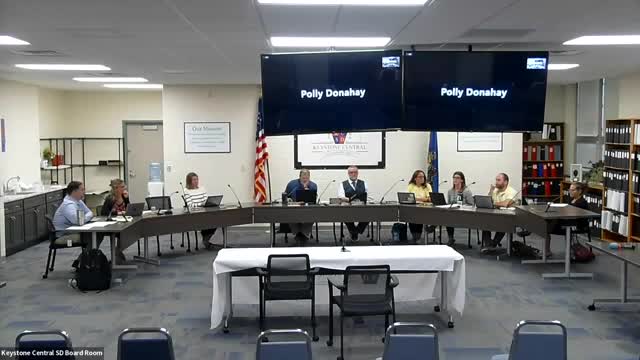Schools adopt innovative curriculum to tackle student behavior
September 20, 2024 | Keystone Central SD, School Districts, Pennsylvania
This article was created by AI summarizing key points discussed. AI makes mistakes, so for full details and context, please refer to the video of the full meeting. Please report any errors so we can fix them. Report an error »

During a recent government meeting, educators discussed the implementation of new social-emotional learning (SEL) curricula aimed at addressing student behavior and enhancing educational outcomes. The focus was primarily on two programs: Second Step and Ripple Effect.
Second Step, currently utilized in the district, provides a comprehensive SEL curriculum for students from kindergarten through 12th grade. Educators emphasized the importance of continuing to meet the diverse needs of students through this program.
The Ripple Effect curriculum, which is designed for middle and high school students, was introduced as a tool for in-school suspension and learning centers. This electronic curriculum allows educators to assign specific lessons tailored to address students' behavioral infractions, such as disrespectful language or aggression. By focusing on targeted lessons, educators aim to help students reflect on their actions and learn appropriate responses, rather than simply serving time in isolation.
The discussion highlighted the potential effectiveness of the Ripple Effect program, with educators noting that some students may respond positively after just one lesson. However, they acknowledged that not all students would immediately change their behavior, and ongoing support may be necessary for those who continue to struggle.
Overall, the meeting underscored a commitment to fostering a more responsive educational environment that prioritizes teaching and reflection over traditional disciplinary measures. The integration of these SEL curricula is seen as a proactive approach to improving student behavior and promoting a positive school culture.
Second Step, currently utilized in the district, provides a comprehensive SEL curriculum for students from kindergarten through 12th grade. Educators emphasized the importance of continuing to meet the diverse needs of students through this program.
The Ripple Effect curriculum, which is designed for middle and high school students, was introduced as a tool for in-school suspension and learning centers. This electronic curriculum allows educators to assign specific lessons tailored to address students' behavioral infractions, such as disrespectful language or aggression. By focusing on targeted lessons, educators aim to help students reflect on their actions and learn appropriate responses, rather than simply serving time in isolation.
The discussion highlighted the potential effectiveness of the Ripple Effect program, with educators noting that some students may respond positively after just one lesson. However, they acknowledged that not all students would immediately change their behavior, and ongoing support may be necessary for those who continue to struggle.
Overall, the meeting underscored a commitment to fostering a more responsive educational environment that prioritizes teaching and reflection over traditional disciplinary measures. The integration of these SEL curricula is seen as a proactive approach to improving student behavior and promoting a positive school culture.
View full meeting
This article is based on a recent meeting—watch the full video and explore the complete transcript for deeper insights into the discussion.
View full meeting